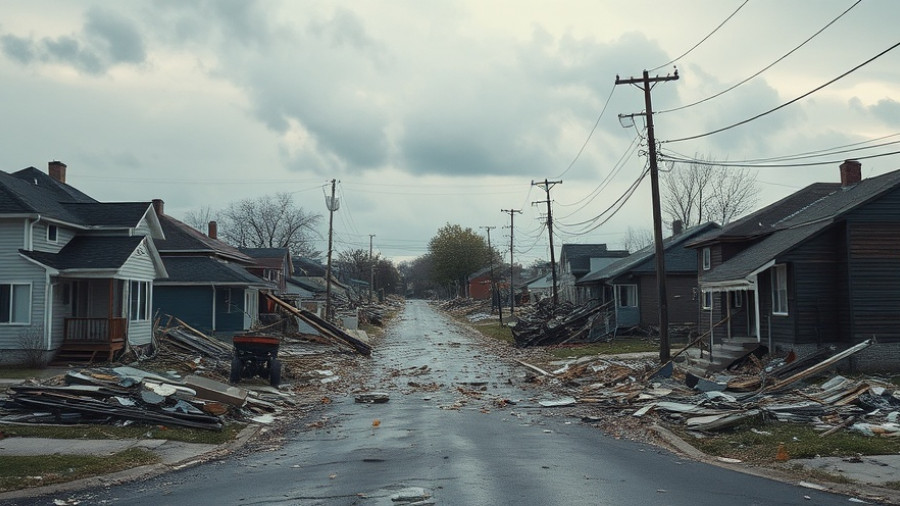
How Hurricane Melissa Redefined Disaster in Jamaica
As the world watches the devastating effects of Hurricane Melissa, the strongest storm to grace Jamaica in 170 years, incidents from communities like Black River and the widely frequented tourist town Montego Bay echo the pressing reality of catastrophic storms. According to recent satellite data, almost 40% of buildings and roads in the hardest-hit areas have been severely compromised, leading to an expanding humanitarian crisis across the Caribbean.
The Human Toll and Infrastructure Collapse
The loss of life from Hurricane Melissa stands at nearly 50 across the Caribbean, with significant casualties in Jamaica. Reports suggest that downed trees and telecommunications infrastructure have complicated rescue efforts, depicting an appearance of isolation in affected areas. The governor of United Way of Jamaica, Kerry-Lee Lynch, poignantly captured the sentiment: “I have never seen anything like this before.” This indicates the scale of devastation exceeds previous natural disasters that left the island battered.
Assessing the Damage: A Long Road Ahead
With damages already projected at $8 billion, the economic ramifications of Melissa could be astoundingly catastrophic. Multiple parishes, including Saint James, Westmoreland, and Saint Elizabeth, are grappling with the immediate aftermath that could alter Jamaica's economic landscape for decades. Existing structures designed to withstand hurricanes are now scrutinized for structural integrity, with experts stating some may require demolition.
The Storm's Path: Satellite Innovations Reveal the Impact
Innovative satellite imagery from sources such as the Earth Observatory of Singapore has provided pivotal insights into the storm's wrath. A stark before-and-after comparison of the towns reveals a plethora of vital community structures reduced to rubble. Notably, areas like Black River, which once bustled with life, now lay unearthed and desolate.
Comparing Past Disasters: Lessons Learned or Forgotten?
Comparative analyses reveal how Melissa's destructive path dwarfs that of previous hurricanes. The intensified storms necessitate discussions on climate change and improved urban disaster preparedness; a reality ignored in many governmental agendas. Perhaps it is time to rethink emergency response strategies as we encounter storms that persistently pulse with stronger ferocity.
The Community Response: Resilience Amid Ruin
The aftermath paints a portrait of resilience. Residents in Montego Bay, known for their hospitable nature, have begun banding together to support each other, showcasing the indomitable spirit of communities in the face of adversity. Despite the shortage of resources and immediate challenges, neighborhood beautification efforts are also an ode to hope.
Ways to Help: How You Can Support Recovery Efforts
As the crisis deepens, humanitarian efforts are ramping up to deliver timely support. Now is a crucial moment for local and international partnerships to flourish, facilitating assistance for those whose lives have been irrevocably altered. Communities and organizations are urging individuals to contribute where they can, either through financial donations or resources directed towards recovery operations.
Act Now: Together We Can Make A Difference
In the upcoming weeks, as assessments continue and recovery efforts gain momentum, the question remains: what will you do? Jamaica's plight in the face of Hurricane Melissa speaks not only to the dangers inherent in extreme weather events but also to the broader community's spirit to rally together for survival and recovery. Let’s ensure we play our part in aiding those affected.
 Add Row
Add Row  Add
Add 




Write A Comment